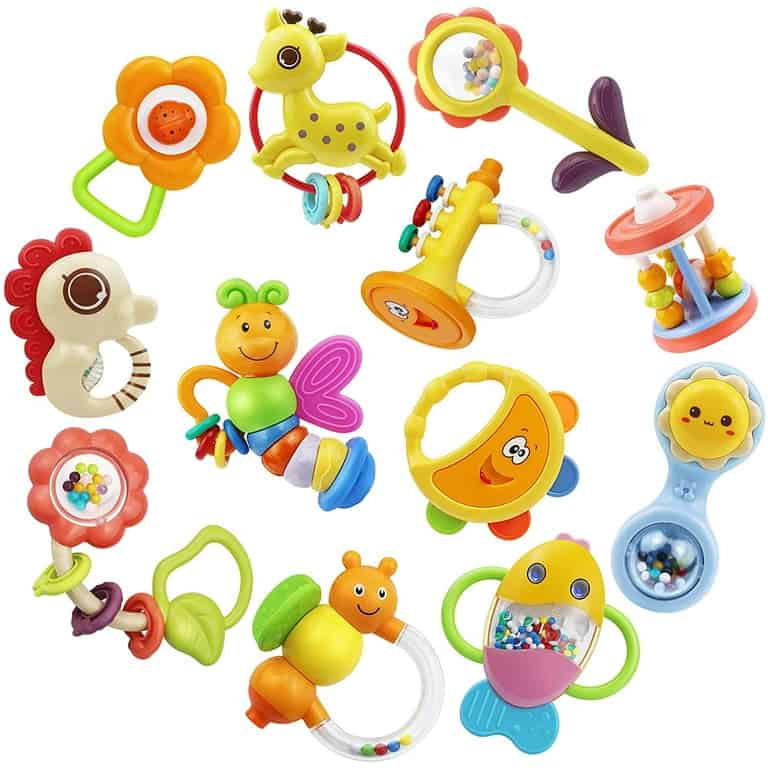Welcome to a World of Fun: Top Toys for Infants 6-12 Months!
Hello lovely parents! Are you excited to explore the colorful and playful universe of toys that will help your sweet bundles of joy thrive during their 6-12 month milestones? Choosing the right toy can be as delightful as baby’s first giggle, and we’re here to guide you through this enchanting journey!
Why Are Toys Important for Infants Aged 6-12 Months?
During these critical months, your little one is becoming a tiny explorer of their vast new world. They are learning to crawl, sit up, babble, and respond to their surroundings. Developmental toys are not just fun, but they’re the keys to unlocking your baby’s cognitive, physical, and emotional growth. From sensory stimulation to fine motor skills, the right toys can elevate your infant’s everyday experiences to magical discoveries!
Understanding Your Baby’s Developmental Milestones
Before we dive into the wonderland of toys, let’s understand what incredible developmental milestones your little ones are achieving at this stage:
- Cognitive Skills: Your baby is starting to understand cause and effect, remember familiar faces, and develop preferences for certain toys and people.
- Motor Skills: The 6-12 month window is when many infants learn to roll over, sit up without support, and perhaps even begin crawling.
- Social and Emotional Development: Prepare for lots of smiles and laughter as your infant interacts more with you and begins to express emotions.
- Language Skills: Babbling becomes more complex, and your little chatterbox might start forming syllables that sound like real words.
Choosing the Right Toys for Your 6-12 Month Old
Now that we’ve highlighted the developmental milestones, let’s match them with the perfect toys to support your infant’s journey:
1. Texture-rich Toys for Sensory Play
At this stage, babies love to explore textures with their hands and mouth. Soft toys with various fabrics and bumps invite your infant to touch, squeeze, and chew, which is great for sensory development and teething relief.
2. Musical and Sound Toys for Auditory Development
Introduce toys that make noise or play music to spark auditory stimulation. Instruments like baby drums, rattles, and shakers are wonderful for this purpose and can lead to lots of giggles and dancing!
3. Colorful Shape Sorters and Stacking Toys
These classic toys are superb for improving hand-eye coordination and teaching about different shapes and colors. They also help with problem-solving skills as your baby figures out where each piece goes.
4. Baby Books with High-Contrast Images
It’s never too early to introduce books! Choose ones with simple, high-contrast images and tactile pages. Reading to your baby fosters language skills and can become a cherished routine.
Tips for Toy Safety and Hygiene
Safety first! Always look for toys that are age-appropriate and made from non-toxic materials. Regularly cleaning the toys is also important to keep germs at bay, especially since your infant will likely be tasting every toy they can get their adorable little hands on.
Stay tuned as we delve deeper into each type of toy, complete with recommendations for the best ones that can lead to hours of safe, educational, and utterly delightful playtime. Your infant’s joyous journey of growth and exploration is just a toy box away!
Get ready to fill your baby’s world with wonder and watch as they reach new heights of happiness and development with each carefully chosen toy. Let the magic begin!

5 Things Parents Should Know in Preparing for Toys for Infants 6-12 Months
1. Age Appropriateness is Key
Understanding the age range for which a toy is designed is crucial. Toys for the 6-12 month age group are specifically engineered to support the developmental stages of infants. These toys often account for safety concerns, like small parts that could pose choking hazards, as well as the educational value suitable for this pivotal growth phase.
2. Multi-Sensory Experiences Enhance Learning
An infant’s brain is rapidly growing, and toys that engage multiple senses can enhance this progress. Look for toys that combine sound, varied textures, bright colors, or light patterns. These multi-sensory toys, such as soft blocks that jingle or crinkle, can offer more developmental benefits, capturing your baby’s interest and improving their sensory processing skills.
3. Interactive Toys Promote Engagement
Toys that react to your infant’s actions, like push-button songs or pop-up figures, are terrific for teaching cause and effect. Interaction with these toys can also boost self-confidence as your baby understands they can influence their environment. Make sure these interactive toys are easy to operate, as complicated mechanisms might frustrate your little one.
4. Encourage Mobility and Motor Skills
As infants approach the one-year mark, they become more mobile. Toys that encourage movement such as roll-along toys, push cars, or crawl-through tunnels can be incredibly beneficial. Also, as your infant’s fine motor skills are developing, choose toys that involve pincer movements like picking up objects or turning pages in a book to build dexterity.
5. Repetition is Golden
Infants love and learn from repetition. Don’t shy away from toys that repeat actions or sounds, as this repetition helps solidify their learning. While it might seem monotonous to an adult, for a baby, hitting a drum to hear the same sound can be an exciting and valuable learning activity.
With these helpful insights, you’re on your way to selecting the best possible toys for your growing infant. Each choice you make brings a fresh opportunity for your little one to see, touch, hear, and learn from the world around them. The joyful exploration of shapes, colors, sounds, and textures helps to construct the foundation for your child’s future learning. And remember, the time spent playing together is not only fun but it strengthens the bond between you and your precious infant. Let’s bring developmental play to life!
See more great Things to Do with Kids in New Zealand here. For more information see here
Disclaimer
The articles available via our website provide general information only and we strongly urge readers to exercise caution and conduct their own thorough research and fact-checking. The information presented should not be taken as absolute truth, and, to the maximum extent permitted by law, we will not be held liable for any inaccuracies or errors in the content. It is essential for individuals to independently verify and validate the information before making any decisions or taking any actions based on the articles.




